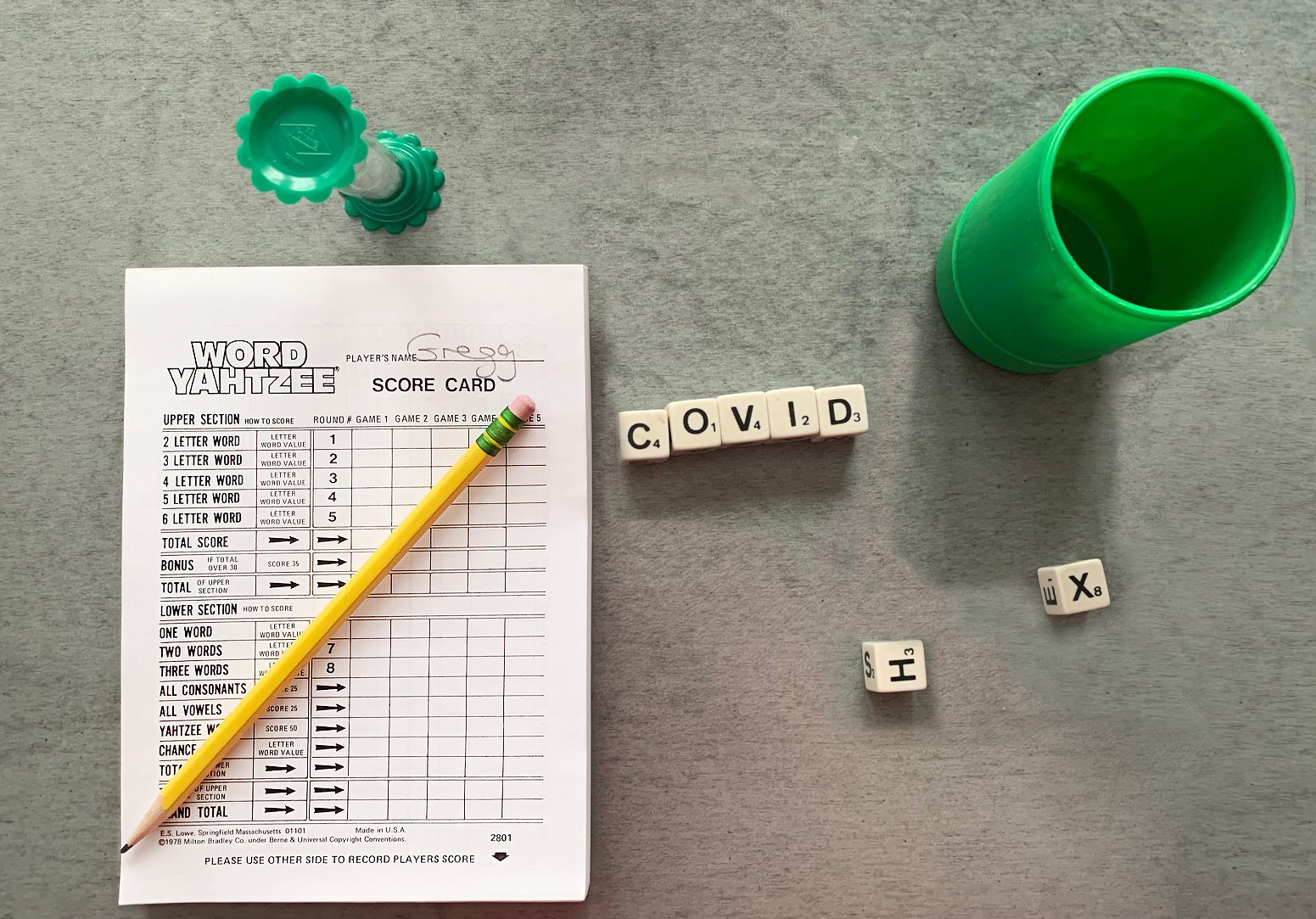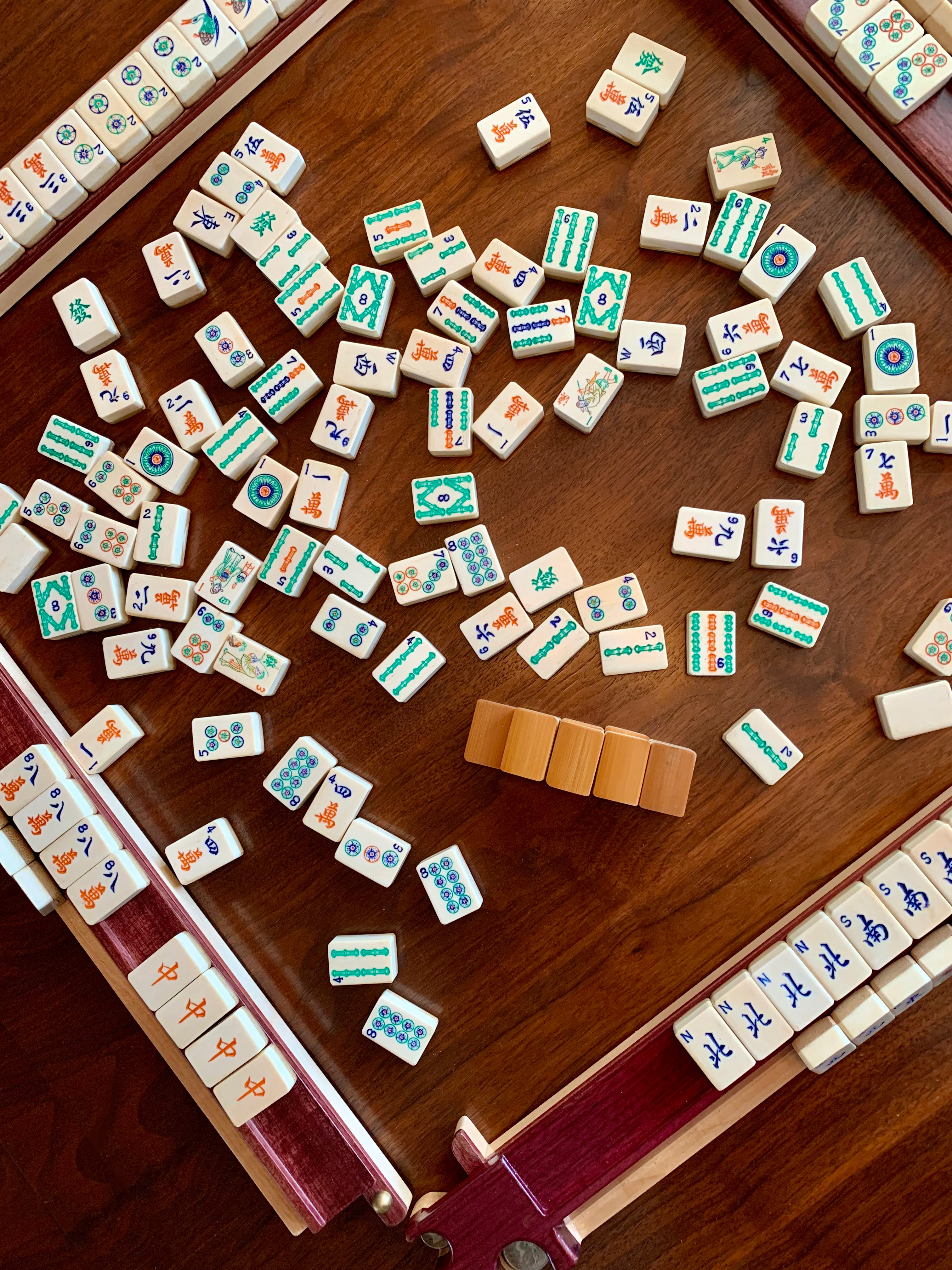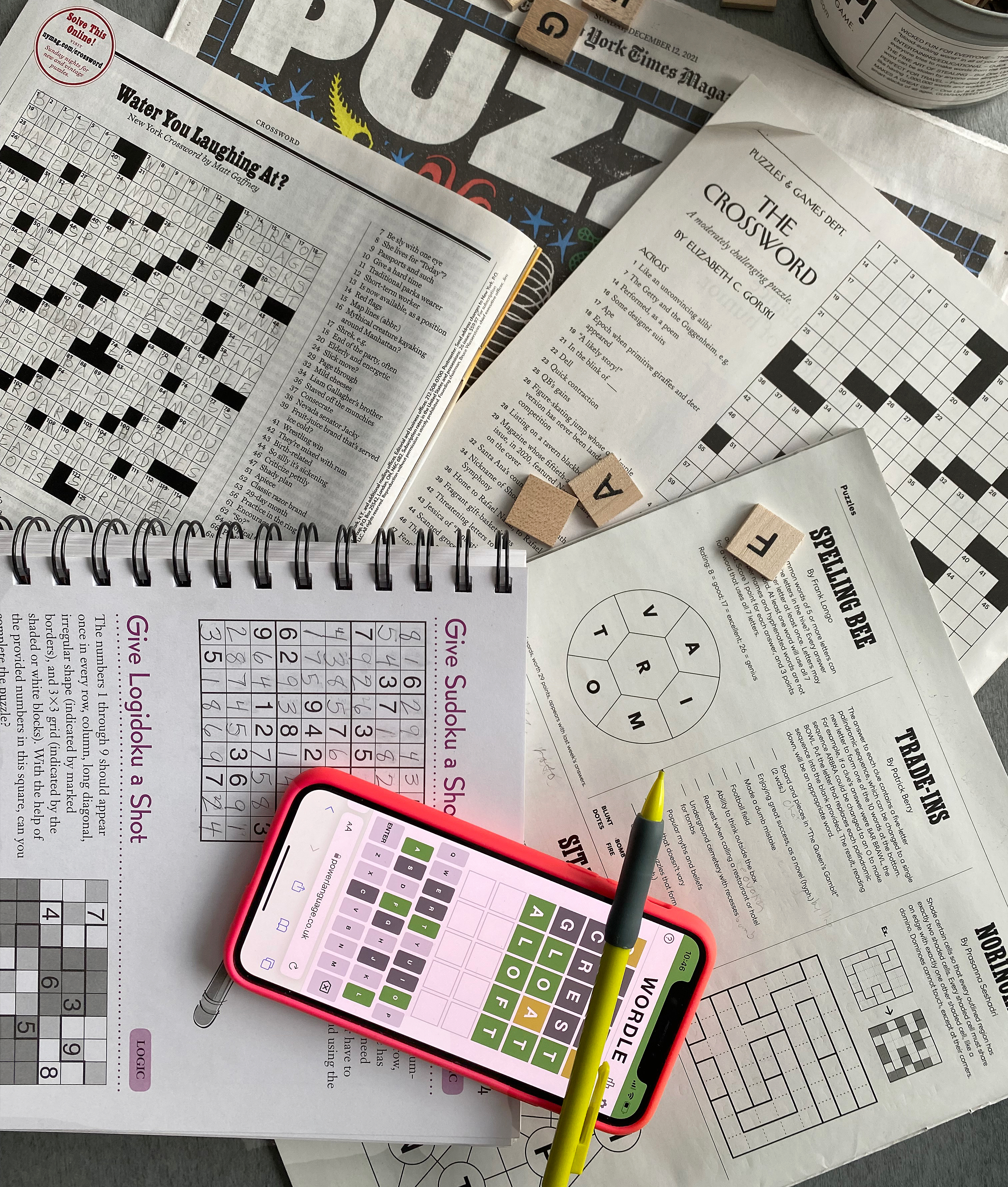In honor of Women's History Month, we are featuring articles from some of our amazing women authors. The first will be from Gregg Swain, co-author of Mah Jongg: The Art of the Game and American Mah Jongg for Everyone from Tuttle.
We’ve gotten through the past two years—phew! It was no small feat. We’ve had to find ways to cope, and many of us came up with the same idea: games. We’ve enjoyed all forms of them: crosswords, sudoku, and KenKen—games usually done by a person alone—and others that we could play with those in our “pods” and online. Not only did we get enjoyment, but games distracted us from everything we were worried about, and wasn’t that a gift!
During the first weeks of the pandemic, many of us searched for ways to escape and de-stress. We tried every banana bread recipe. We organized messy drawers, got rid of old files, and cleaned out the closet. We soon realized we’d be at home longer, as COVID made its way through the Greek alphabet. We got to every unread book and magazine. Jigsaw puzzles took over dining tables—we weren’t going to be entertaining any time soon, so might as well make use of the space. Some of us tuned into podcasts. We watched Schitt’s Creek, which always made us laugh (what a welcome reaction), and Bridgerton, which certainly whisked us to another place and time. But just sitting in front of the television or computer screen left us empty, wanting more stimulation. We didn’t just want to be entertained; we wanted to be active participants.
The Queen’s Gambit came along at just the right time. The heroine of the story obviously struggled with many difficult issues, but she found an escape from her inner demons with a game: chess. The series reminded us how rewarding spending time together—engaged in competition—could be. Since chess is a game for two, it was easy for many to incorporate into pandemic life, along with checkers and gin rummy. Board and table games had made their appearance again. Couples entertained themselves with Bananagrams, backgammon, and Battleship. Anyone who wanted a big challenge could play Go. Families played Yahtzee, Rummikub, Risk, and Monopoly. All these require strategic thinking and planning, and that’s what people were missing, and needed.Not only were people playing games, they were also spending money on expensive sets. Crisloid, a direct-to-consumer manufacturer of high-end, beautifully designed backgammon, dominoes, cribbage, and mahjong sets, saw an increase in sales. Vintage and antique mahjong dealers also report the same. Although the pandemic was a time of isolation, many began to see game sets as valued family heirlooms, symbolizing time together.

The pandemic would have been very different if we didn’t have the internet, which allowed us to interact with far-flung family members and friends. Spending several hours on Zoom with others could be tiresome, but do it around a virtual game table, and time flies by. Using the conference call feature on their phones, a platform like FaceTime, or a game’s online audio feature, allowed players to talk all afternoon or evening. Many of us who play weekly four-people games such as mahjong made our games virtual, and some changed these “gatherings” into daily events.
Cari K. used Houseparty while playing mahjong with friends. She describes those games: “It was quite a virtual party, and really a technological feat: balancing two devices and a ring light, while trying unsuccessfully to black belt [become a top ranked player].” Another player in the same group, Kay W., living alone at the time, said “it alleviated the loneliness to see their faces [via Houseparty].” A number of us considered our games with friends to be real lifelines.
So yes, the pandemic drove us to play “in-person” games online. To put the role of these online platforms into perspective, before the pandemic, realmahjongg.com normally had a few hundred tables going at a time (people could play by themselves against “bots,” with three other friends, or with bots and friends). When the pandemic took hold, people fled to these online tables, so much so that the site almost crashed because of the amazing increase of traffic. At 6 a.m. Eastern time there might be 6,000 tables going!
It wasn’t just the mahjong tables that were busy the last two years: people used their free time to hone their game skills by playing against the computer. Kitty B. turned to Bridge Base Online to practice her game. Roberta K., a backgammon enthusiast who lives alone, played online against bots; she feels she learned some strategies she’ll use the next time she plays with friends.
Even people who hadn’t played games on a regular basis started. John K. began to play mahjong with his mother, brother, and sister-in-law. According to his wife, “It became the most wonderful ritual, which continues to this day. The voice chats [on the game site] made the miles disappear the moment they clicked on the little microphone icon…” The pandemic gave John and his family the chance to connect in a lovely and most leisurely way.

Dara Collins and Donna Kassman of Modern Mahjong started their business a few years ago, designing dice to go with vintage mahjong sets. When COVID hit they knew they needed to support their community. They posted word games, brain teasers, and other online puzzles, and everyone loved them. For some mahjong players, their weekly game had been their one big time to socialize, and COVID had taken that away. Modern Mahjong created virtual tournaments—opportunities for people to play online with friends and/or strangers (who might become friends).
Millennials have long turned to the internet for much of their entertainment. No surprise, many spent more time playing video games. But groups were able to play more traditional games as well. Charades could readily be acted out on Zoom, and others were quickly adapted to online life. Couples were able to connect virtually and enjoy each other’s company while playing Catan and Code Names, to name just two. Articles were written on how to host virtual game nights. People weren’t going to let the pandemic spoil the joy of “getting together" for a shared pastime.
The internet not only provides group opportunities; some sites offer solitary challenges. AARP, an organization that knows a thing or two about stimulating mental activity, has a variety of games on their website. Newspapers publish electronic games, as well as paper and pencil ones. Publications mix it up: online games might be different from those in their print editions. Some of these pastimes give players’ “little gray cells” a workout, whereas others are meant to be calming: the New York Times offers Tiles, which has a zen mode option. Michelle Arnot, who’s authored three books on crossword puzzles, obviously loves word games. She starts the day with Spelling Bee, and ends it with a crossword (having done several of them during the day). A longtime user of Words with Friends, she stays connected, via the chat function, with friends who live far away.
As the internet and apps allow us to find entertainment, exercise our brains, and connect with others, players use it to improve their skills. Computer sites allow us to see how quickly we completed puzzles; our rankings show if we are improving and how our performance compares to others’. Some sites, such as the New York Times, not only allow us to keep track of our daily progress, but offer columns written about their puzzles so we can become better players. Players have their own write-ups offering critiques and suggestions. What were once solitary pursuits no longer are.

You all know about Wordle, the almost overnight success. Designed by Josh Wardle for his partner, it was launched in October 2021. When a “sharing” element was added, allowing players to display their winning patterns on social media (without the words themselves), it took off. It was such a hit that the Times purchased it and added it to their online offerings. Millions start each day with it. Barney G. not only plays it, but also Ooodle, a math equivalent, as a warm-up to the Times’ puzzles. Adrienne D. wrote, “I am hooked on a daily dose of Wordle as soon as I have a sip of tea in the morning… Despite the fact I am playing these games online, I am actually connecting to friends who also play. It gives us yet another topic for animated discussion at a time when we are still feeling isolated.”
Facebook helped us form communities at the same time it became a learning tool for people needing game support. Johni Levene started the group “Mah Jongg, That’s It!” in 2014, and its membership increased dramatically during the pandemic. Jan Egri, one of its administrators, reports the group grew from 25,000 members in February 2020 to 38,000 early in February 2022! Like-minded groups such as these provide information and even friendship to people of all levels: beginners ask questions, and advanced players are happy to share their expertise. People also network, with players connecting with others online or even in person.
Game books are selling well, too: Tuttle Publishing reports game book sales rose more than 35% since COVID hit. Not surprisingly, books about games for two people are selling briskly, but so are other how-to-play books, including mine: American Mah Jongg for Everyone.
We’ve become newly enamored of these pastimes. I’ve heard over and over what an important part of our lives games have become. We’ve rediscovered how wonderful it is to come together, either in person or virtually, engaging in an activity that distracts us from all of our worries, while stretching our minds. I believe games are here to stay.
—

Gregg Swain is the co-author of three books: Mah Jongg: The Art of the Game and American Mah Jongg for Everyone (both published by Tuttle Publishing), and Mah Jong Is for the Birds, a guide to identifying vintage mahjong sets (available at mahjongmahjong.com). Her article about The Queen’s Gambit and mahjongg can be found here.

